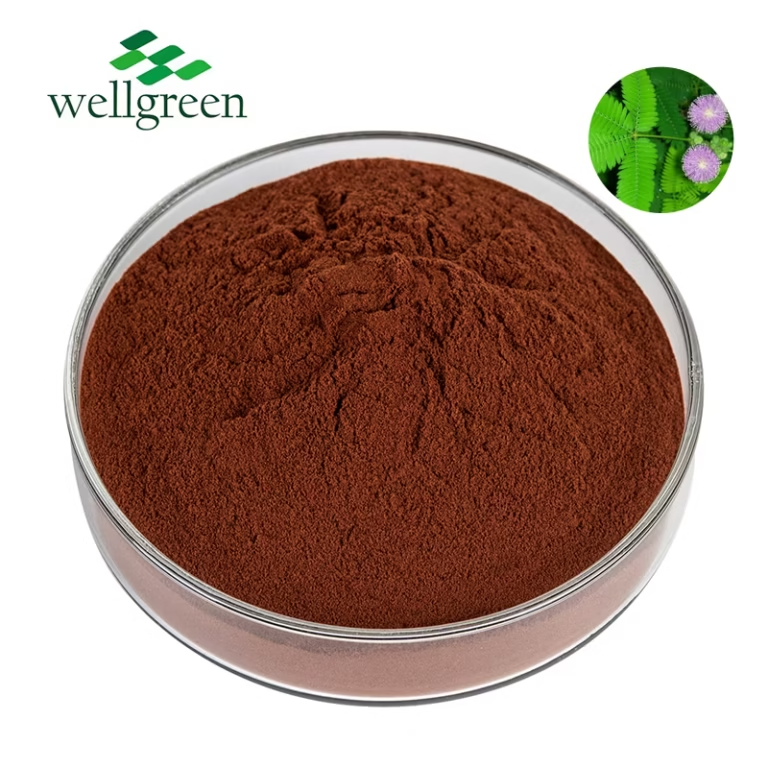Mimosa Hostilis: A Sacred Plant for Indigenous Cultures
Wiki Article

Mimosa hostilis is a significant plant deeply ingrained in the traditions of many Indigenous cultures across South America. For centuries, it has been employed by indigenous communities for its diverse spiritual and medicinal uses. The root bark, known as teonanácalli, is particularly revered for its copyright effects, believed to induce profound visions that facilitate transformation.
Through traditions, the plant spirit of Mimosa hostilis is invoked, guiding individuals on a quest of self-discovery and connection with their inner selves. The knowledge concerning this sacred plant has been shared through generations, preserving the rich cultural heritage and wisdom of these communities.
Delving into MHRB Extract: The Mysteries of Mimosa Hostilis
Mimosa hostilis, a tropical plant indigenous to the Americas, has captured the attention of both researchers for centuries. This fascinating species harbors within its roots a potent extract known as MHRB, which has gained significant popularity in recent times.
MHRB extract is celebrated for its effects, often associated with altered states of consciousness. Traditional knowledge suggest a long history of MHRB use in cultural practices.
- Scientists continue to explore the pharmacological properties of MHRB, seeking to uncover its full range of effects.
- The nuances surrounding MHRB usage require awareness. It is crucial to seek guidance from knowledgeable individuals before exploring any practices involving this powerful extract.
Exploring the Ethnobotanical Uses of Mimosa tenuiflora
Mimosa tenuiflorae, commonly acknowledged as "sacred mimosa", holds a significant position within the ethnobotany literature of diverse tribes. Its versatile properties have been utilized for centuries in traditional medicinal practices, as well as in ceremonies. The bark of this remarkable plant possess a rich spectrum of bioactive compounds believed to exhibit therapeutic effects.
From curing ailments like pain to promoting spiritual insight, Mimosa tenuiflora has long been revered for its profound effect on human life.
The Chemistry and Pharmacology of Mimosa Hostilis Root Bark
Mimosa hostilis root bark contains a complex chemical profile, primarily known for its abundant concentrations of alkaloids. Among these, dimethyltryptamine (copyright) and harmaline are particularly important. These substances possess a range of pharmacological properties, including hallucinogenic effects. The bark contains various alkaloids, including alpha-harmine, which may contribute to its total pharmacological profile.
The traditional applications of Mimosa hostilis root bark include a variety of healing purposes, particularly in South American societies. However, it is crucial to recognize that scientific research on the provenance of these uses remains scarce.
Harnessing the Power of copyright with Mimosa Hostilis
Mimosa hostilis, a tree native to South America, has captured the attention of researchers and individuals alike for its potent chemicals, particularly dimethyltryptamine, or copyright. copyright is a powerful hallucinogenic substance known for producing intense experiences. By ingesting the bark of Mimosa hostilis, one can access the realms of copyright-induced experiences. It is crucial to remember that copyright is a potent substance and should be treated with caution.
- Safe use is paramount, and consulting from experienced individuals or knowledgeable sources is highly recommended.
- The experience of copyright can be both rewarding but also potentially intense. It is essential to prepare both mentally and physically for the consequences that may arise.
copyright from Mimosa hostilis provides a unique opportunity to delve into the depths of consciousness, possibly leading to personal growth and understanding.
Challenges in Using Mimosa Hostilis
The utilization of Mimosa hostilis for personal purposes raises a myriad of ethical questions. While some argue that its cultural significance warrants respect and tolerance, others caution its use due to potential negative consequences. It's crucial to evaluate this complex issue with care, taking into account the religious contexts and potential implications. A informed perspective is essential for navigating the ethical nuances surrounding Mimosa hostilis.
Cultivating Mimosa Hostilis: A Guide for Growers
Embarking on the journey of cultivating Mimosa Hostilis can be a gratifying experience for the dedicated grower. This fascinating plant, endemic to tropical regions of the Americas, has earned significant recognition in recent years due to its distinctive properties. Before your cultivation endeavor, it is crucial to comprehend the specific needs this plant demands to thrive.
- Ensuring adequate sunlight is paramount for healthy Mimosa Hostilis growth. These plants prosper in full sunlight, ideally receiving a minimum of ten hours per day.
- Maintaining well-drained soil is essential to prevent root rot, a common issue that can ruin your plants. A mixture of clayey soil with composted matter is ideal.
- Regular watering is necessary, but be mindful not to overwater your Mimosa Hostilis. Allow the top inch of soil to dehydrate before providing another watering.
The Shamanic Traditions Surrounding Mimosa Hostilis
Deep within the sacred forests of South America, the rituals of vision have been woven for generations. Among these powerful allies is Mimosa Hostilis, a mysterious plant revered by the shamanspiritual traditions of indigenouscommunities. It embodies within its bark a wellspring of knowledge, guiding healers on their journeys into the otherworld.
The elders understand that Mimosa Hostilis is not simply a herb; it is a bridge between realms, connecting us to the ancient energies that flow through all of creation.
Addressing Legal Issues with Mimosa Hostilis
The legal status of mimosa hostilis differs significantly from one country to another. It means that the permissibility of possessing, using, or cultivating this plant revolves around your particular geographic location.
Furthermore, laws and regulations surrounding mimosa hostilis are constantly adapting. It is therefore essential that you carefully research the specific legal framework in your locality.
- Seeking advice from a legal professional who specializes in hemp laws is highly suggested.
- Remaining informed about any changes to the law can help you avoid any potential legal issues.
Mimosa Hostilis and Spiritual Exploration: A Journey Inward deepening
The ancient wisdom whispered through the rustling leaves of Mimosa Hostilis calls to seekers on a inner quest. Embarking upon this path is to reveal hidden dimensions within, where the veil between worlds fades. It's a profound experience that guides the soul, revealing truths latent beneath the surface. As you merge with the essence of this sacred plant, be prepared for insights that shift your worldview.
- Welcome the unknown with an open heart and a eager mind.
- Release all expectations and allow yourself to be guided by the rhythm.
- Remember, this is a quest of self-discovery. Trust in your own intuition.
The wisdom gained through Mimosa Hostilis echoes long after the experience has passed. It is a gift that can change your life in profound and lasting ways.
Understanding the Challenges and Rewards of Mimosa Hostilis
Mimosa hostilis is a plant native to South America, gaining increasing attention click here for its potential pharmacological properties. While it contains valuable compounds like copyright, responsible for its psychoactive effects, it's crucial to approach this plant with respect. Understanding both the potential downsides and the positive aspects of Mimosa hostilis is essential for safe and informed use. Potential side effects can include unpredictable behavior, emphasizing the need for thorough research, responsible consumption, and a controlled environment.
- It's important to consult with a healthcare professional before using Mimosa hostilis or any products derived from it.
- Proper dosage is crucial to minimize potential negative consequences.
- Be aware of the legal status surrounding Mimosa hostilis in your region.
- Always prioritize safety and well-being when exploring the use of this plant.
 Report this wiki page
Report this wiki page